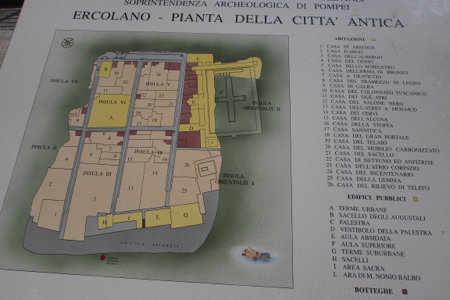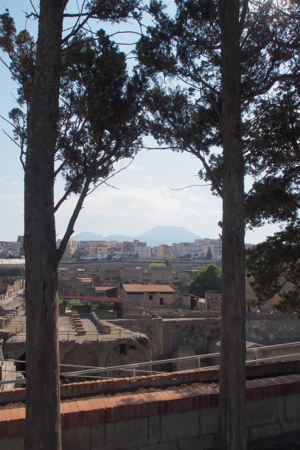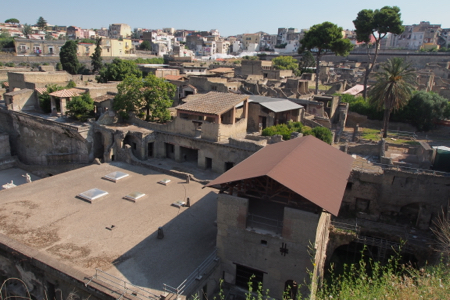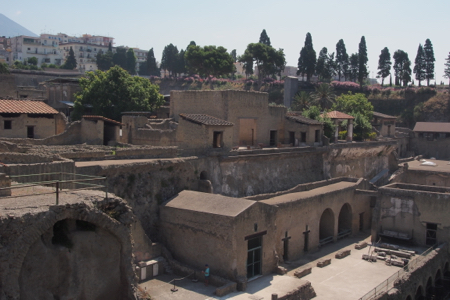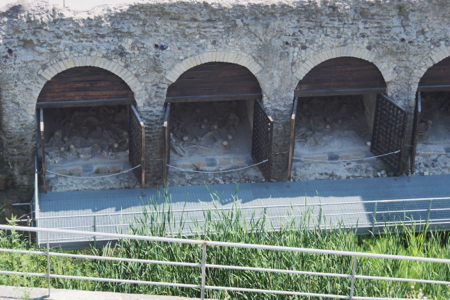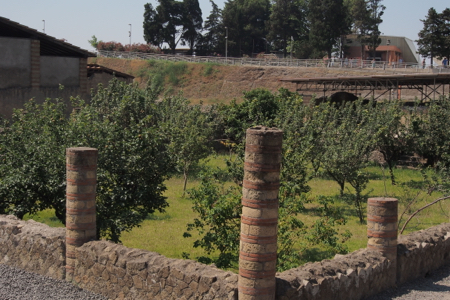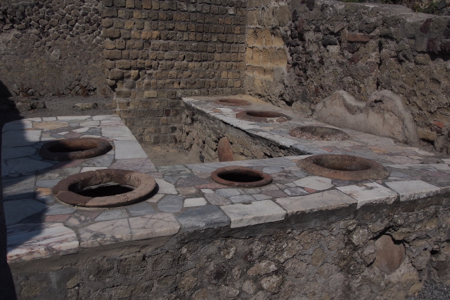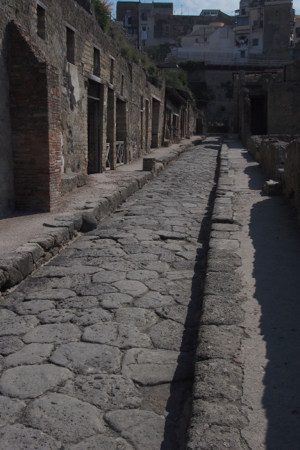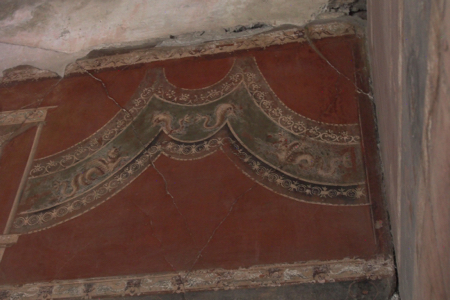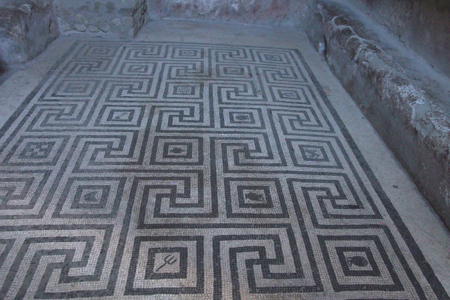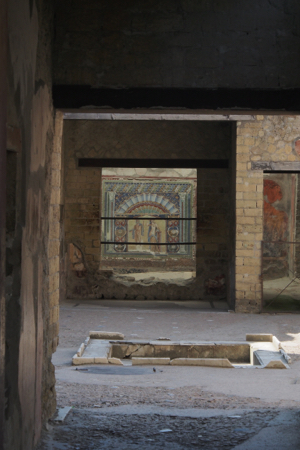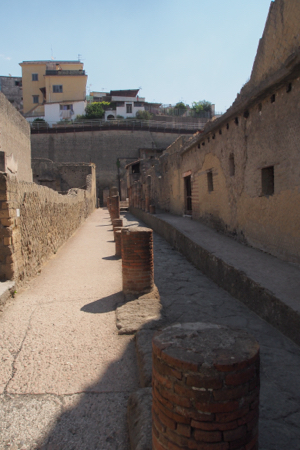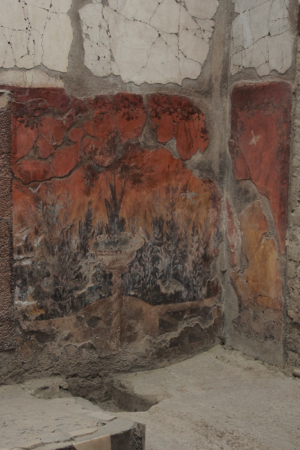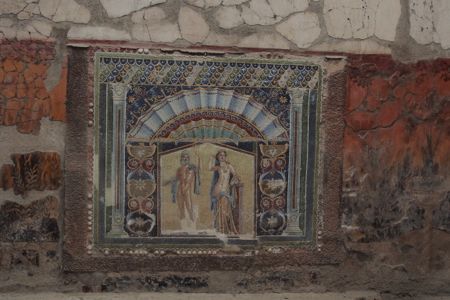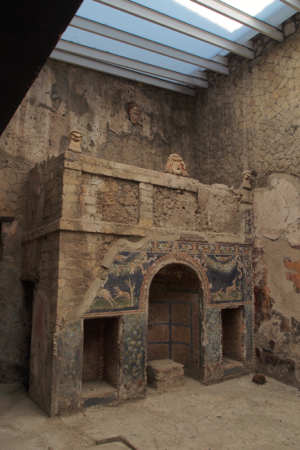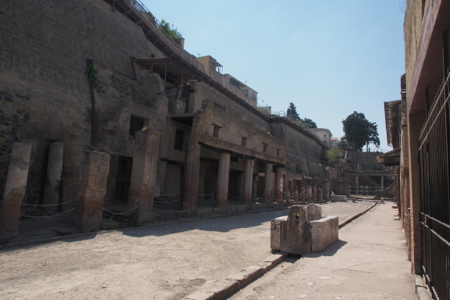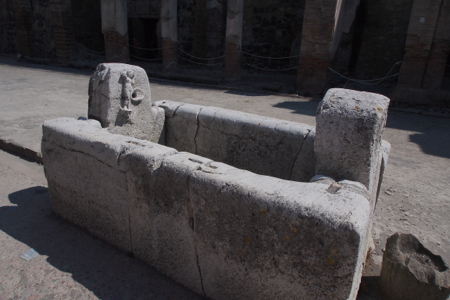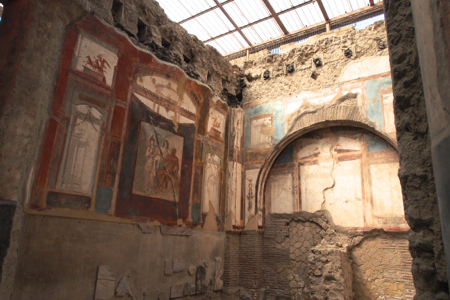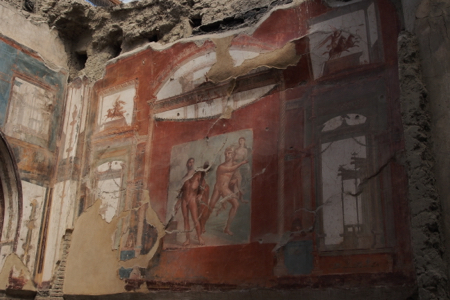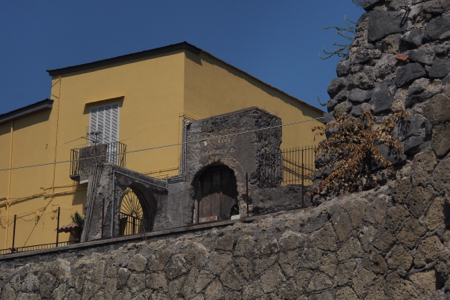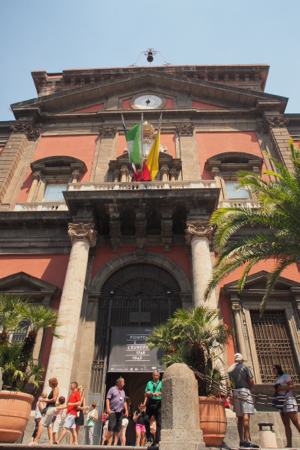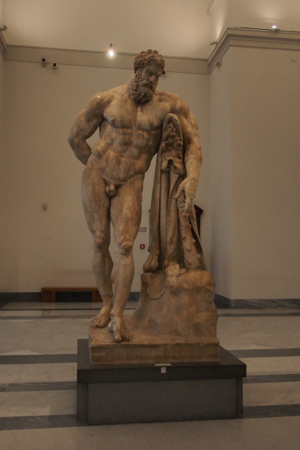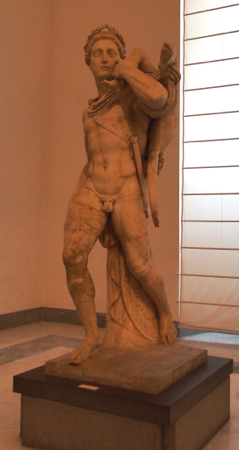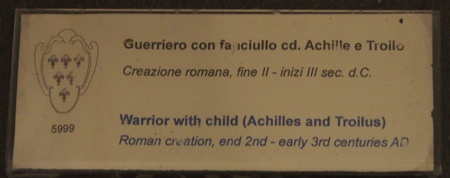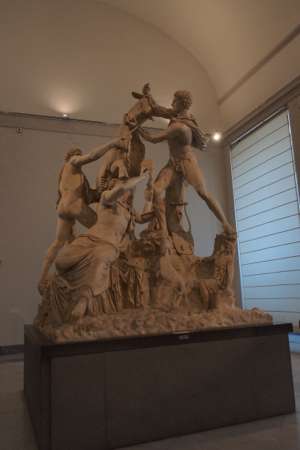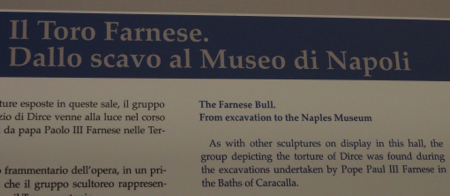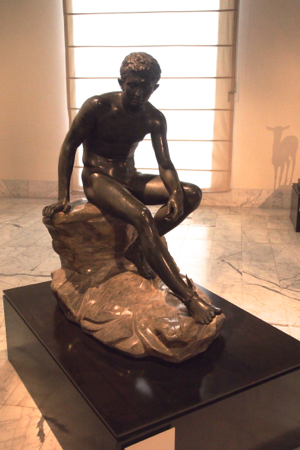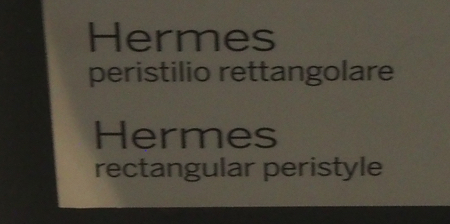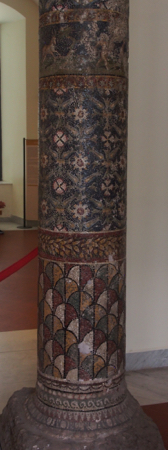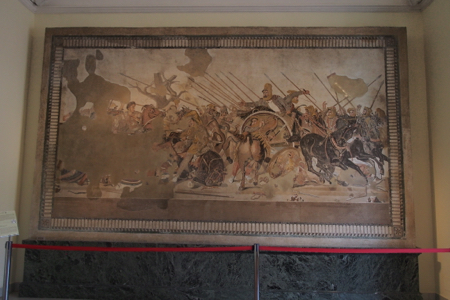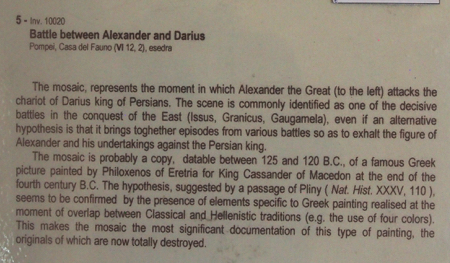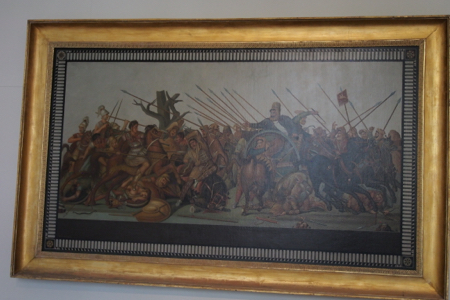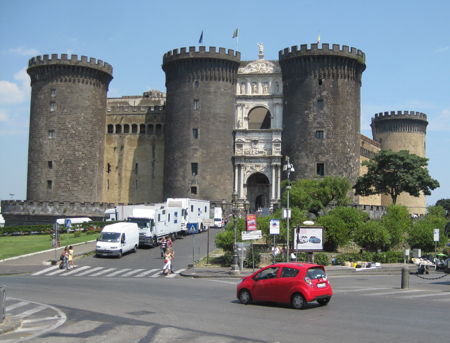Sat., July 4th – Sorrento and Herculaneum – Happy Independence Day!
This morning we took the optional tour to Herculaneum and the Naples Archeological Museum. We have been to Pompeii before and had heard that Herculaneum was even better.
Herculaneum was buried in August (or October, the experts disagree) 24, 79 AD by lava flow from the eruption of Mt. Vesuvius and people were killed by the 900° F temperature of the 70 to 80 mile an hour lava flows. The town was buried 50 to 60 feet deep by lava. Pompeii on the other hand was covered by 20 feet of ash and pumice that fell for three days and three nights and people were killed by the noxious gas. Vesuvius is still an active volcano that last erupted in 1944. The slopes of the volcano are rebuilt with houses but a scientific center constantly monitors the “naughty” volcano.
In 1738 a farmer digging a well drilled into the Roman theater and since then 40% of the Roman city of Herculaneum has been uncovered. The rest lies below the new city and probably will not be uncovered. Pompeii has been 75% uncovered.
Mt. Vesuvius
Herculaneum
Herculaneum with Mt. Vesuvius looming in the background
Herculaneum
Herculaneum
We were among the first tourists at the site this morning and it was nice not to deal with other tour groups. We entered a typical house of this Roman residential city. Because the lava flowed in and around objects in its path, some of the second stories of the buildings remain in this excavated area.
Herculaneum - Skeletal parts in view
Herculaneum - Orchard
Herculaneum - kitchen
Herculaneum - Street
Herculaneum - Mosaic tiles
Herculaneum
Herculaneum - Original frescoes
Herculaneum - Original frescoes
Herculaneum - Mosaic tiles
Herculaneum - Mosaic tiles
Herculaneum - Mosaic tiles through window
Herculaneum - Street scene
The city had iron pipes and an under ground sewer/drainage system. The iron pipes were coated by calcium in the water and therefore were not as toxic. The sewer ran under the large stone cart roads and there were sidewalks on both sides of the streets. Many of the houses and pillars are covered with glass mosaic designs and the floors of the houses were of marble mosaics.
Herculaneum - Wine jars
Herculaneum - Original frescoes
Herculaneum - Mosaic tiles
Herculaneum
Herculaneum
Herculaneum
We went inside a public meeting room with frescoes of Hercules. We exited passing a quince orchard and looked at the seaport buildings. Before the more recent eruptions, the sea was much further inland.
Herculaneum is a small site but very well preserved.
Herculaneum - Original frescoes
Herculaneum - Original frescoes
Herculaneum
Herculaneum - showing present ground level
Herculaneum - Brick work
The outer walls of the buildings were made of red brick or tan tufa (compressed volcanic ash) and held with Roman cement – volcanic sand, limestone, and water – and it has lasted for 2000 years.
Next we went into Naples to the Naples Archeological Museum. On the way we learned that pizza was invented in Naples. Tomatoes from the New World were put on bread and fed to prisoners. Since the new tomatoes proved not to be poisonous, they were used for all people. Queen Margarita came to Naples and wanted to try this new food. She was given a pizza with red tomato, white cheese and green basil, the three colors on the Italian flag. So a Margarita pizza was named.
The Naples Archeological Museum is now the number one museum of Roman art in the world and specializes in finds from Herculaneum, Pompeii, and Rome.
Naples Archeological Museum
Hercules
Warrior with Child
The Farnese Bull
We spent time in the Pompeii section. On display are perfectly whole items including surgical instruments, musical instruments, door brass, dice and ankle bones games, kitchen pots, and entire silver dining set including spoons, glass jars and bottles, frescoes removed from walls, and mosaics with some pictures made with chips as small as one millimeter.
Speculum
Ankle bones game
Blue Vase
Naples Archeological Museum
Naples Archeological Museum
Battle between Alexander and Darius (original)
Battle between Alexander and Darius (copy)
We went to lunch at a pizza shop in Naples and then drove through Naples to see some statues (Garibaldi and Dante) and then the American consulate with a huge flag hanging down the front wall in honor of Independence Day. We drove past the port for cruise ships and cargo and many apartment houses. Naples is not a clean, pleasant city.
Castle Nuovo - seat of the medieval kings of Naples
Mt. Vesuvius
Back at the hotel we had a 6 PM lecture about the Italian mafia. A professor from Naples, who teaches a class for Acadia College in Philadelphia (the old Beaver College), talked about how the mafia influences politics, public consensus, and economics. The topic is very controversial and was very interesting to us.
Since we had “dinner on our own” tonight we walked to the markets near the hotel and ate panini and wine and cheese for dinner in our room. It was another interesting, historical but very hot (100° F) day.
| Return to Top | Return to Itinerary | Return to Trips page to view other trips | Return to Dreamcatcher Home Page |


